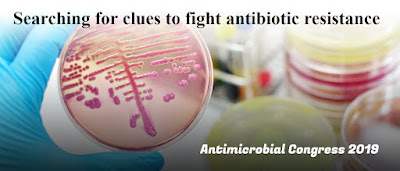Antimicrobial Resistance:Searching for clues to fight antibiotic resistance

To conflict the rise of
drug-resistant bacteria, researchers are developing how one superbug bacteria
adapts to fight with an antibiotic of last resort, hoping to find clues that
can lengthen the drug's effectiveness.
Researchers at Rice University
and the University Of Texas Health Science Centre at Houston ran experiments to
track the biochemical changes that vancomycin-resistant Enterococci (VRE)
underwent as they adapted to fight another antibiotic, daptomycin.
"We need to get to
a platform where we can anticipate how these pathogens will become resistant to
antibiotics so we can stay one step ahead of them," said Rice biochemist
Youssef Shampoo, co-author of a study in the journal Antimicrobial Agents and
Chemotherapy that found VRE can develop resistance to daptomycin in more than
one way.
The stakes are high. In
2014, the World Health Organization reported that antibiotic-resistant
infections were on pace to kill 10 million people per year worldwide by 2050.
According to the U.S. Centres for
Disease Control, VRE is one of the nation's leading antibiotic resistance
threats. The Centres for Disease control estimated Vancomycin Resistant
Enterococci will infect some 30,000 people in the U.S. this year and kill 2,300
of them.
Daptomycin, an
antibiotic that first became available in 2003, is one of the last drugs
doctors can use to fight multidrug-resistant superbugs like VRE,
methicillin-resistant Staphylococcus aureus (MRSA) and glycopeptide-resistant
enterococci (GRE).
Unfortunately, health
officials documented cases of daptomycin resistance as early as 2005, and the
number of cases is on the rise worldwide.
Shampoo said one of the
principle findings of the study was that a specific strain of VRE, Enterococcus
faecium, has an unusually diverse set of strategies for resisting antibiotics
like daptomycin, and that diversity can make treatment of infections even more
difficult.
It is believed that by
understanding how these pathogens acquire resistance, we can produce advanced
treatment strategies or new 'co-drugs' that target their ability to become
resistant.
Co-drugs that target the evolution of resistance
could be administered with antibiotics like daptomycin which help patients
fight off infection and stem the spread of increasingly resistant strains of
bacteria in hospitals.


Comments
Post a Comment